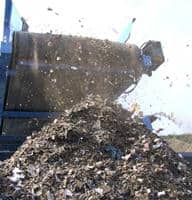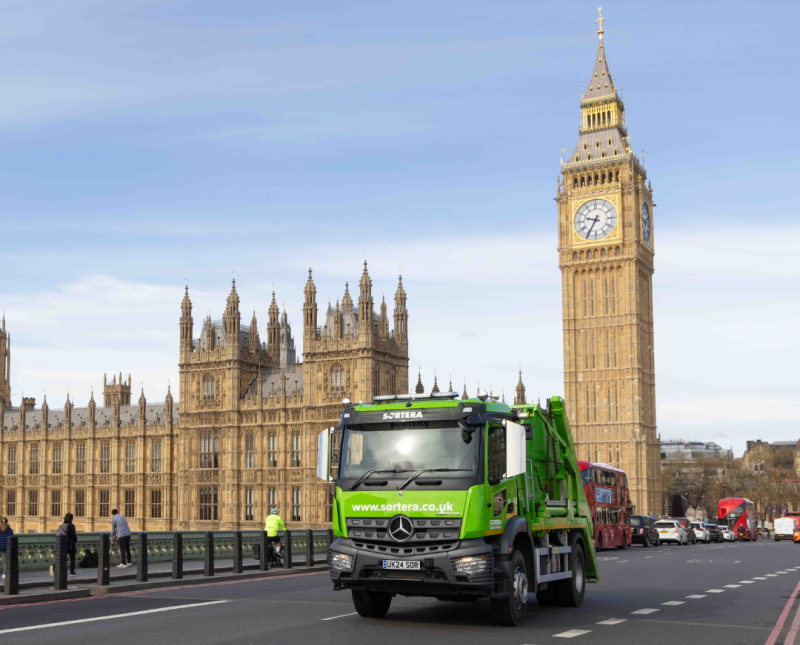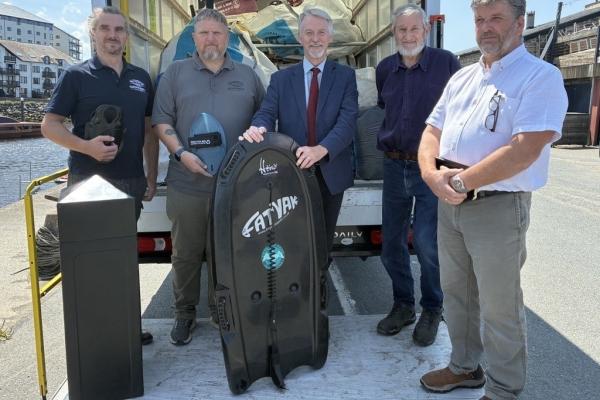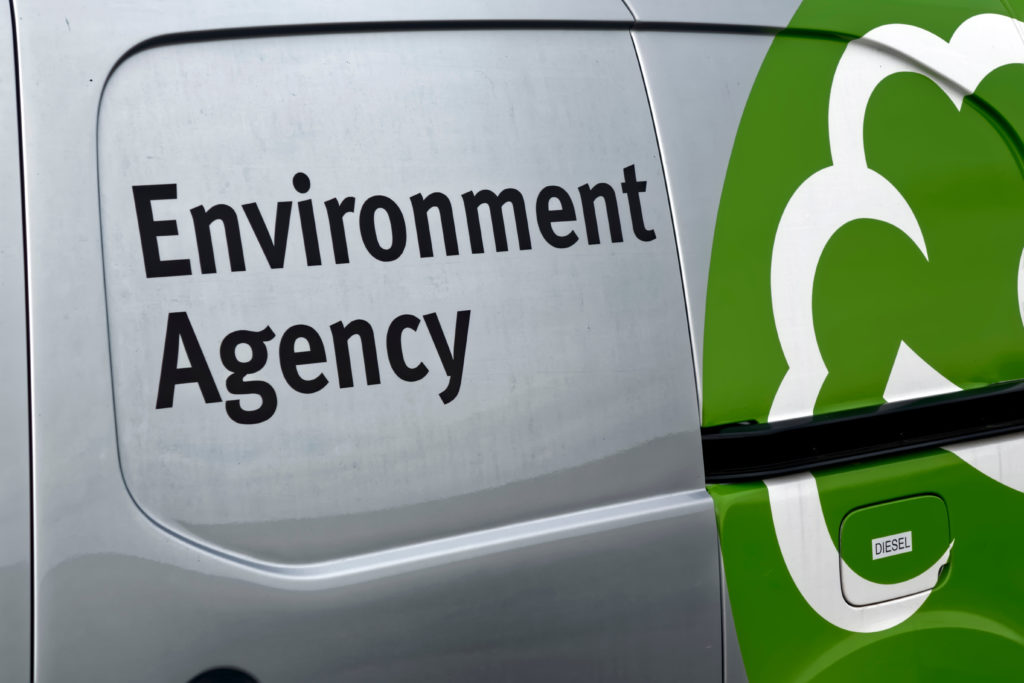1. Below we publish a long note of explanation from a Treasury spokesman
2.We also attach the revised guidance on the situation,available here as aPDF.
Two weeks ago, the Treasury issued a brief which was seen as saying that fines from trommels which have in the past been taxed at the 2.50 rate for inert waste should be charged at the 64 standard rate. At the same time it said that waste on material used as top layer fluff in landfill cells was also taxable.
Provenance
Crucially, the guide seems to restate the point that if fines are correctly described on a waste transfer note with a provenance that shows they comply with the 2011Order listing materials that can qualify for the 2.50 rate, then the 2.50 charge still applies.

It would appear that waste transfer station operators may have to be far more diligent in recording where material comes from and even keep some loads apart in the sorting process to ensure that the provenance of material is clear and provide full details on the waste transfer note, such as naturally occurring stones and soils or something along these lines.
One expert suggested that the key is that if it goes in the transfer statioon as inert waste, when it goes out the door it remains that at 2.50 a tonne. “The system that you have in your sorting MRF has got to be a really good system. You pull out the plastics and wood and other recyclables, separate the inert material for the lower rate and the remainder would face a 64 landfill charge.”
While some in the skip hire sector today were seeing the clarification as a very welcome move, some experts urged the sector to be cautious although they had won clarification that inert fines would not attract the higher tax rate.
New guidance
Todays statement is not being seen as a u-turn or reinterpretation of the legislation.
The revised guidance, in the PDF, includes the following words: Now, as before, the rate of Landfill Tax will depend on whether the materials are as listed within the 2011 Order, meet the relevant conditions and can be demonstrated as such with the appropriate evidence. Where material processed at waste transfer stations and material recovery facilities falls within the list of materials in 2011 Order, meet the relevant conditions and can be demonstrated as such with the appropriate evidence, they would be liable for the lower rate of Landfill Tax if disposed to landfill.”
The new guidance clarification adds: “Materials that fall outside those listed within the 2011 Order, or fail to meet the necessary conditions (for example, if they contain contaminants such as those described above) or are not accompanied with the suitable evidence, would be liable for the standard rate of Landfill Tax if disposed to landfill. The remaining or residual materials from this process by their very nature are variable. There are instances where fines will be made up from materials all of which qualify for the lower rate and in these circumstances the fine would qualify for the lower rate providing the necessary evidence could be demonstrated. But in other instances the residual material would not be made up of material as listed in the 2011 Order and would therefore, as has always been the case, be liable for the standard rate of Landfill Tax if disposed to landfill.
Treasury statement
Separately today, a Treasury spokesman for Economic Secretary Chloe Smith explained that Waste transfer fines are the fine, residual material that remain at waste transfer sites once loads of waste have been treated and sorted for recyclable materials. Studies undertaken by the Environment Agency show that fines and other residues from waste transfer operations and construction and demolition waste processing contain variable quantities of organic waste, sometimes significant quantities of gypsum and other contaminants including asbestos.
Related link
He continued: By their very nature, they are made up of a variety of materials that can have varying environmental consequences. This material is not listed in the Qualifying Material Order and therefore is not liable to be charged at the lower rate.
Many landfill operators had been correctly charging the standard rate of landfill tax for material disposed at their landfill sites. HMRC were therefore concerned that such operators were being put at an unfair competitive disadvantage if other landfill operators were incorrectly applying the lower rate.
The spokesman continued: As a result HMRC issued a Revenue & Customs Brief on 18 May to provide clarity within the sector. This clarification has been sought by the waste management industry itself and representatives of landfill site operators. It sought to ensure that all landfill site operators consistently apply the landfill tax legislation, so allowing operators to compete fairly. The Brief was warmly welcomed by a number of landfill site operators.
However, in light of the response to the Brief, HMRC have been actively engaged in discussions with a number of waste management industry stakeholders. As a result of these discussions, HMRC understands that there has been some misunderstanding of the implications of the Brief. In particular, it would appear that many landfill operators and waste transfer site operators have interpreted the Brief as meaning that all waste going from a waste transfer station to landfill must be charged at the standard rate and have adjusted their prices accordingly. This is not what the brief says and is not the case.
The processing, segregating or sorting of waste creates an amount of residual material, said the Treasury spokesman. We are aware from studies undertaken by the Environment Agency that fines and other residues from waste transfer operations and construction and demolition waste processing, contain variable quantities of organic waste, sometimes significant quantities of gypsum and other contaminants including asbestos. The Brief sought to explain that this residual material, which by its very nature is variable and for which it would be difficult to determine its exact content and origin, is not material as listed in the 2011 Order and is therefore liable for the standard rate of landfill tax if disposed to landfill. This is not a change of policy but a necessary clarification given that it was being inconsistently applied.
The clarification in the brief concerned only this residual material and not all waste coming out of a transfer station. We believe that this misunderstanding has resulted in significant and sudden increases in the fees waste transfer sites are charging their customers.
Following discussions with the waste industry and others, HMRC will today issue further clarification on this issue to make the liability issues more explicit. In particular it has worked closely with the trade body, the Environmental Services Association, to ensure this message is spread as widely and as quickly as possible to their members. We have been assured by the industry that the clarification will result in waste transfer sites and landfill sites reversing their fee increases.







Subscribe for free